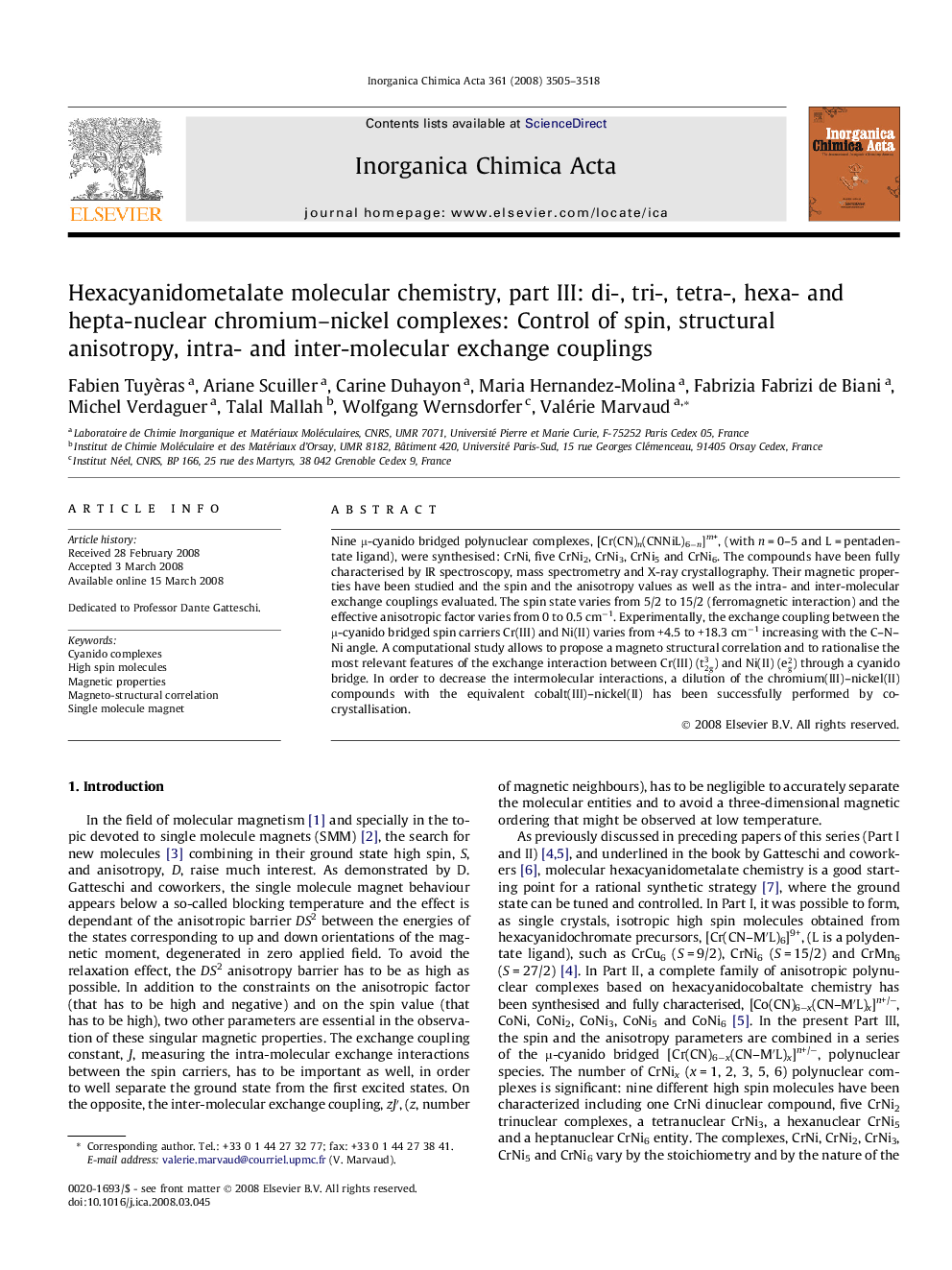| کد مقاله | کد نشریه | سال انتشار | مقاله انگلیسی | نسخه تمام متن |
|---|---|---|---|---|
| 1311528 | 1499210 | 2008 | 14 صفحه PDF | دانلود رایگان |

Nine μ-cyanido bridged polynuclear complexes, [Cr(CN)n(CNNiL)6−n]m+, (with n = 0–5 and L = pentadentate ligand), were synthesised: CrNi, five CrNi2, CrNi3, CrNi5 and CrNi6. The compounds have been fully characterised by IR spectroscopy, mass spectrometry and X-ray crystallography. Their magnetic properties have been studied and the spin and the anisotropy values as well as the intra- and inter-molecular exchange couplings evaluated. The spin state varies from 5/2 to 15/2 (ferromagnetic interaction) and the effective anisotropic factor varies from 0 to 0.5 cm−1. Experimentally, the exchange coupling between the μ-cyanido bridged spin carriers Cr(III) and Ni(II) varies from +4.5 to +18.3 cm−1 increasing with the C–N–Ni angle. A computational study allows to propose a magneto structural correlation and to rationalise the most relevant features of the exchange interaction between Cr(III) (t2g3) and Ni(II) (eg2) through a cyanido bridge. In order to decrease the intermolecular interactions, a dilution of the chromium(III)–nickel(II) compounds with the equivalent cobalt(III)–nickel(II) has been successfully performed by co-crystallisation.
Di-, tri-, tetra-, hexa- and hepta-nuclear chromium–nickel complexes were synthesised with ground state spin values ranging from 5/2 to 15/2. The synthetic strategy allows to control the spin value, the structural anisotropy and the intramolecular exchange couplings, leading to single molecule magnets. To decrease the intermolecular interactions, co-crystallisation of the Cr–Ni compounds in Co–Ni matrix has been successfully performed.Figure optionsDownload as PowerPoint slide
Journal: Inorganica Chimica Acta - Volume 361, Issues 12–13, 1 September 2008, Pages 3505–3518